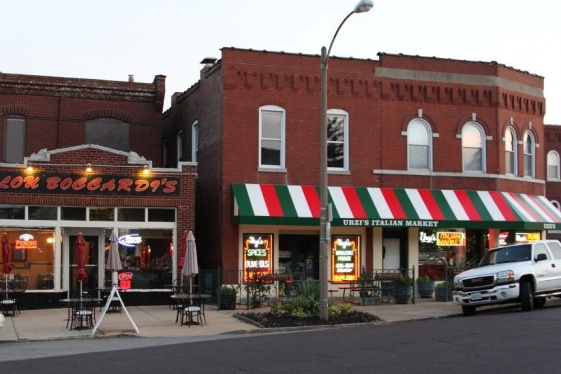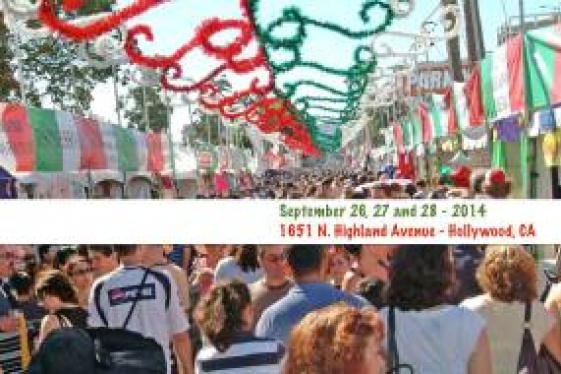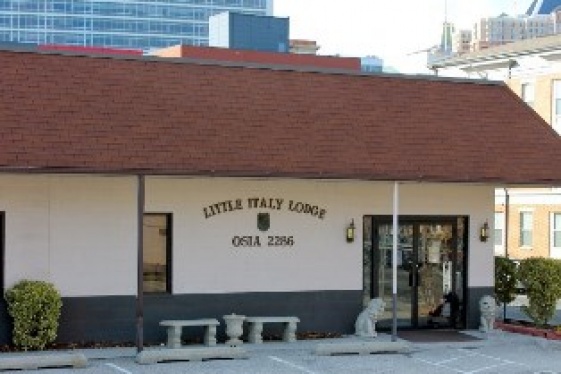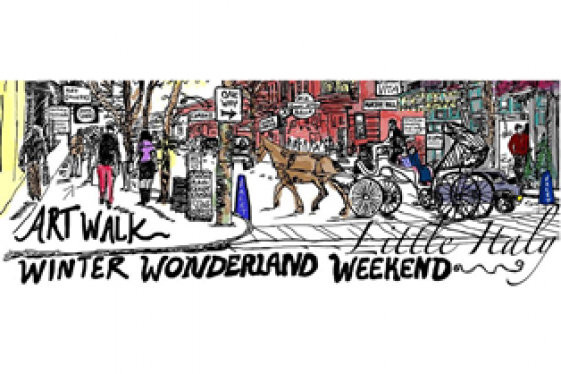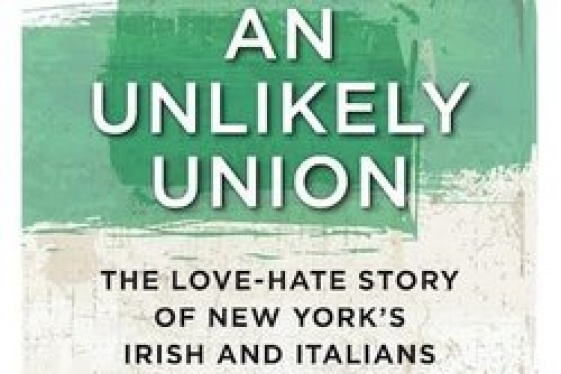
Roberto Ruocco (Honorary Italian Vice Consul - San Diego)
L'Italia a San Diego: incontriamo Roberto Ruocco

The United States have many Little Italy, not only in the larger and most famous cities. One of these less known is in San Diego, where the activities related to our country have a protagonist who, together with the community, represents Italy passionately and tirelessly. His name is Roberto Ruocco, and he explains us how even in Southern California, on the border with Mexico, Italy means beauty, culture, pride of our roots.
President Ruocco, please tell us something about San Diego and the Italian emigration in this city: for example, not everyone knows that you too have a Little Italy
San Diego is the sixth largest county in the United States for population. It's called "The most beautiful city in the USA" thanks to its natural beauty, spectacular landscapes and dream weather.
The Italian emigration in San Diego became significant after the 1950. As a result of tuna fishing, Italians came down from the Bay Area to Monterey, San Pedro and then to San Diego. Gradually, the community began to grow in the Little Italy area, historically India Street, where many people still live.
The building of the I-5 motorway created a substantial exodus among the Italian families. Over the years, due to the crisis, the Italian families converted their fishing activities into the catering industry. Families coming from Palermo and Mazzara, as Busalacchi, San Filippo, Balistreri and Giacalone, opened restaurants that are still now the county's top restaurants.
The peculiarity of San Diego's Little Italy is that it's still a lively and prolific reality: New York, Chicago, San Francisco have Italians nucleus that are becoming dramatically smaller, while the building of skyscrapers and other homes in downtown San Diego cause the continuous arrival of young Italian families. The Little Italy has also a group, the Little Italy Association, which manages the life and proliferation of commercial activities: it embellishes, supervises and makes secure the neighborhood and its livable space. Every year the festivals celebrated in our Little Italy are visited by over 200,000 people that are in love with this city, which is similar to Palermo or Naples in its orographic build and in its weather. The Little Italy Association also promotes investments of new entrepreneurs from Italy.
You are the Italian Honorary Vice Consul in San Diego, but you are also the President of the Italian Cultural Center and the of the House of Italy. How is the Italian presence in San Diego, today?
I have the privilege of representing more than 3,500 Italian citizens registered to AIRE (the civil registry of Italians abroad). But the real presence of Italians or Americans of Italian origin is approximately the double: a huge work I do alone because of the well-known lack of resources assigned to the Vice Consuls abroad, which barely cover the postal and transport costs.
However, I consider myself as the family doctor, the station policeman or the mayor of the village, as I personally know many families who seem to appreciate the work that I did in connection with the General Consulate in Los Angeles. I am also the President of the Italian language school of San Diego, the Italian Cultural Center, and the House of Italy, which along with other 45 Italian associations constitute the fabric of Italian associations in San Diego.
The Italian Cultural Center was created in 1981 in the district of the Old Lady of the Rosary Catholic Church, from the late Father Steven Francini, a Barnabite. Today it is still the best Italian school in San Diego, with approximately 15 teachers and 430 members. It organizes cultural events such as lectures of professors, film experts, poets . It's a non-profit organization that pays for itself, with great difficulty, serving all the lovers of the most beautiful language in the world.
The House of Italy has been since 1935 part of the House of Pacific Relations, which includes institutions from 32 countries hosted by the City of San Diego in the Balboa Park. Its purpose is to maintain a genuine identity of Italian-American culture and descent. Currently the HOI has 130 members, who meet every third Sunday of the month in the Hall of Nations.
Unfortunately, both of these organizations suffer a lack of a stable own home, that could encourage the growth of membership and the diversification of activities.
San Diego also hosts one of the most important Italian Cinema festivals among those organized yearly in the US. You've just finished the edition of 2013 ...
This is a very Italian story! In 2005, four persons - Professor Victor Laruccia, Captain Donald Santamaria, Professor Pasquale Verdicchio and me - started to screen Italian movies at the House of Italy, films from the Library of the General Consulate in Los Angeles. The theater was always full of people. So we thought: why don't we start to screen recent movies? We immediately had a great success: we invited directors and actors from Italy, with a big economic effort from free contributors and wonderful volunteers. The 2013 edition had the participation of Maria Grazia Cucinotta and Francesco Bruni, with the movie "Scialla". The San Diego Italian Film Festival is the real point of connection between Italian culture and the city of San Diego, a beautiful showcase of rare delicacy, very appreciated by the community.
One of the services that you provide is to help Americans of Italian heritage getting Italian citizenship, fighting with our bureaucracy. Tell us something about this ... is there a success story you'd like to share with us?
I'm a Lieutenant Colonel of Italian Air Force on leave, and also a lawyer licensed in Italy and a "Foreign Legal Consultant for the law of Italy" qualified at the California Bar. The recognition of the naturalization of the descendants Italian citizens is my specialty. The purpose of the law n. 91/1992 is to increase the Italian population with the descendants of Italian citizens, both to regain the skills lost due to emigration in other countries, and to incentivize the birth rate in Italy. I helped more than 500 families to recognize their right to derivative naturalization by ius sanguinis, not only in San Diego County, but all over the American area. Apart from the already mentioned Victor Laruccia - my dear friend and my first client, I helped actors, surgeons, lawyers, judges, public officials, soccer and tennis players and others, to regain their rights.
Certainly, the law is not perfect: it has unconstitutionality defects regarding discrimination based on sex in the ascending line, which in my opinion should be changed by the legislator. In addition, the bureaucracy is certainly an obstacle but, broadly, the cooperation of the General Consulate in Los Angeles is reasonably quick.
How's Made in Italy going in San Diego? Which are the most successful sectors?
San Diego is a city of commerce and U.S. military bases. The enterprises are basically concentrated in the area bordering to Mexico. The Italians have a major presence in the restaurant business and in the trade of food and wine. In addition, there are many Italian researchers and scientists in various University and Companies engaged in the biochemical and technological research.
You may be interested
-
“The Art of Bulgari: La Dolce Vita & Beyond,...
by Matthew Breen Fashion fans will be in for a treat this fall when the Fine Arts Museums...
-
“The Hill” St. Louis’ Little Italy
When the fire hydrants begin to look like Italian flags with green, red and white stripes,...
-
13th Annual Galbani Italian Feast of San Gen...
In September of 2002, some of Los Angeles' most prominent Italian American citizens got to...
-
1st Annual Little Italy Cannoli Tournament
Little Italy San Jose will be hosting a single elimination Cannoli tournament to coincide...
-
2015 scholarship competition
The La Famiglia Scholarship committee is pleased to announce the financial aid competition...
-
30th Annual Art Holiday Walk, Winter Winter...
Holiday walk hours Friday, 12/5 noon-9pm, Saturday ,12/6 noon-9pm Sunday, 12/7 noon-6pm. S...
-
An Unlikely Union: The love-hate story of Ne...
Award-winning author and Brooklynite Paul Moses is back with a historic yet dazzling sto...
-
Candice Guardino Brings GILDA AND MARGARETTE...
Candice Guardino is adding to her list of successful theatrical productions with the debut...






